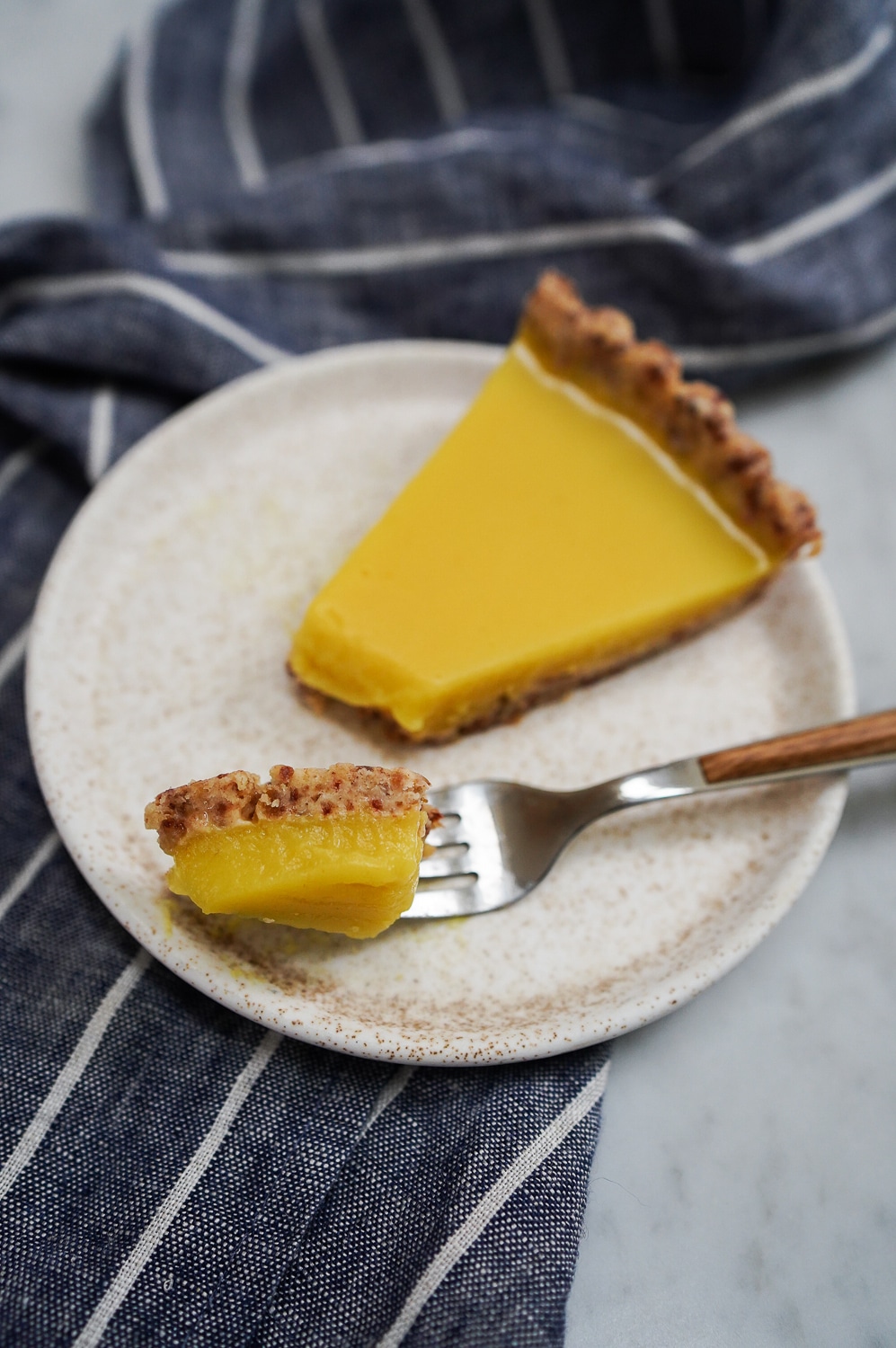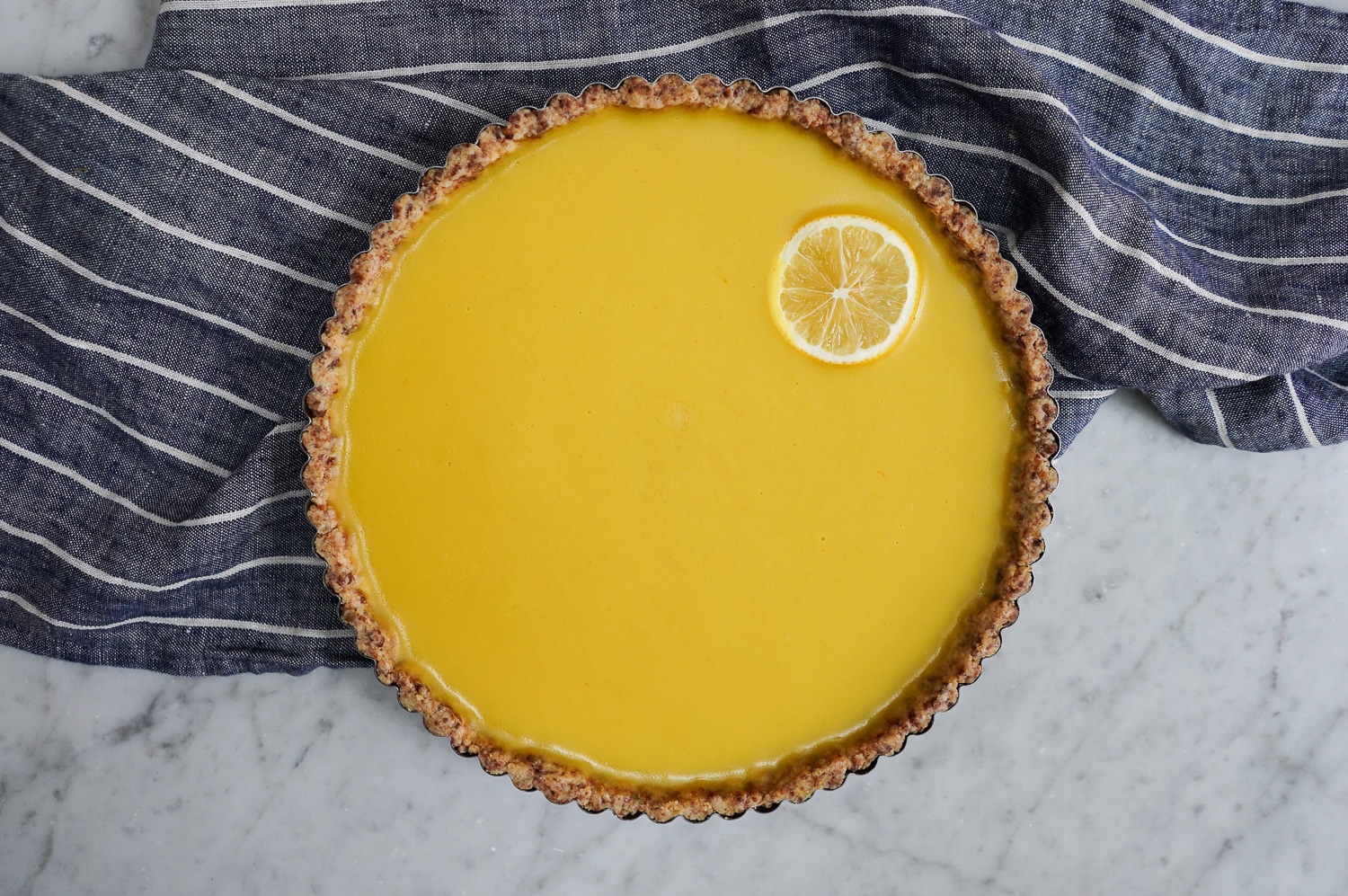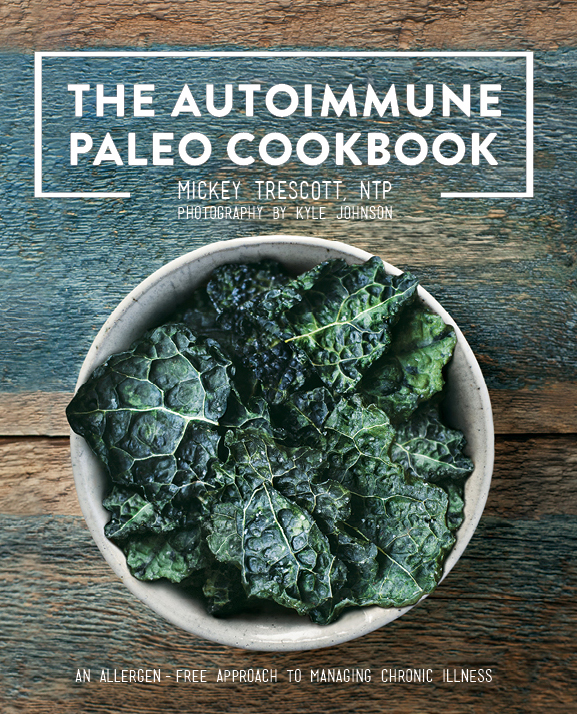This post contains affiliate links. Click here to see what that means! That being said, we only promote authors, products, and services that we use ourselves and wholeheartedly stand by. To learn more about how we earn money here on Autoimmune Wellness, head on over to our Promotional Policy.

The best way to use an abundance of citrus during the winter season? My vote is for this take on a traditional lemon curd tart, using delicious Meyer lemons and a hint of orange to naturally cut the tartness. For those of you sensitive to cassava and/or coconut, you’ll be happy to hear this citrus tart doesn’t use any of those ingredients, but still tastes as fantastic as ever!
This citrus tart isn’t difficult to make, but I do recommend using a tart pan (I prefer this one) in order to make slicing and serving easier, and recommend having all of your crust fully cooled and filling ingredients ready to go, as the sequence needs to be followed quickly and accurately in order to get the texture just right. Enjoy!

- For the crust:
- 1 cup pitted dates, tightly packed
- ⅔ cup sustainable palm shortening
- 1½ cup arrowroot powder
- ¼ cup maple sugar
- For the filling:
- 1½ cup fresh-squeezed Meyer lemon juice (about 8 lemons)
- ¼ teaspoon ground turmeric
- 3 teaspoons grass-fed gelatin
- ½ cup sustainable palm shortening
- ½ cup maple sugar
- ½ cup fresh-squeezed orange juice (about 2 oranges)
- ¼ cup arrowroot powder
- First, make the crust. Preheat the oven to 350 degrees. Place the dates in the bowl of a food processor and pulse until small granules form. Don't overmix or they will turn into a paste. Add the shortening, arrowroot, and sugar, and pulse until combined into a crumbly mixture. If it is too sticky, add some arrowroot powder one tablespoon at a time.
- Place the mixture in the bottom of a 9-inch tart pan. Use your hands to work the mixture evenly across the bottom and up the sides, pressing it into an even form. Bake for 15 minutes, or until lightly browned - crust will be slightly soft, but develop a firmer texture as it cools. Set aside to cool to room temperature, or about 1 hour.
- When the crust has fully cooled, make the filling. Sprinkle the turmeric and gelatin on the lemon juice and set aside for 5 minutes to bloom.
- Add the shortening and sugar to a saucepan and heat on low to melt and dissolve. Take off the heat and allow to cool a bit before adding the lemon juice, turmeric, and gelatin mixture.
- Stirring constantly with a whisk, heat on the lowest setting until the mixture is lukewarm and all of the fat, sugar, and gelatin are dissolved. Your mixture should be viscous. Take care not to overheat the mixture as it will cause the gelatin to overcook. Take off the heat and set aside.
- In a small bowl, first whisk together the orange juice and arrowroot powder and then add to the pan with the lemon mixture.
- Place the pan with the filling on low heat and cook, stirring constantly with a whisk, until just thickened, about 5 minutes. You'll notice the texture of the mixture change from fully viscous to the texture of thin pancake batter. Do not overcook. When the mixture has thickened, pour immediately into the tart crust.
- Allow to cool for 5-10 minutes before placing in the refrigerator for at least 2 hours to set.

















21 comments
This looks gorgeous! Do you think it would work with coconut oil in lieu of palm shortening (besides adding coconut flavour)?
Hi Liz! No, I don’t think that coconut oil will sub well here as the texture is different. If you can tolerate butter, I would try that first. If you try it though, let me know how your experiment turns out!
any substitute for palm shortening, that is not an oil
Bill, I am sorry but these are the only ingredients I’ve tested.
Hi, this looks really yummy! for the filling, is there something we could sub for the arrow-root? (I’ve got a crust solution). I’m avoiding cassava, arrowroot, tapioca etc …. but coconut is ok for me – I guess coconut flour wouldn’t work as well. Maybe extra gelatin?
Hi Les, unfortunately I know coconut won’t work. Sometimes arrowroot and tapioca can be used instead of the other, but it sounds like you are sensitive to all the starches. I might just make the filling as like a panna cotta-type dessert in a glass jar!
This looks amazing! I cannot have dates or palm shortening. I’m wondering if I could substitute prunes for the dates in the crust and duck fat for the palm shortening. It would be amazing to be able to have a dessert like this on AIP!
Sandi, I do think that prunes might work, duck fat also might work for the shortening, but it would have an interesting flavor. I’d actually try leaf lard first. Let me know how it goes!
Thank you for a cassava-free dessert option!
Is there a vegan option for gelatin in your recipe thanks
No, sorry!
I’m allergic to gelatin. Any ideas on a sub? I usually use egg in baked goods but am wondering if it would work the same here.
Hi JoAnna! I have not tried it, but I know that some people use agar agar instead of gelatin for a thickener. I would suggest making 1/4 or 1/2 of the filling only to experiment and see what works!
SO DELICIOUS! I’m sensitive to cassava and coconut so I was so excited to see this recipe. I made individual tarts so I could better control my impulse to eat the entire thing 😉 Loved everything about it from the texture of the crust to the tartness of the curd. Minor note, next time I’ll use a fork to poke holes in the unbaked crust so it doesn’t bubble up.
Rebecca, I’m so happy you loved it, and smart baking in the mini tart tins!
What am I doing wrong? I am not getting a viscous or pancake batter texture for this filling. ☹️
Bri, since you’ve not given me any information, I can’t help troubleshoot! Did you use all of the ingredients I called for and follow the directions?
Is there a substitute for the maple sugar? Maybe coconut sugar?
Hi Carol! I have not tried any substitutes but I know that coconut does not sub 1:1 with maple sugar as the texture is different.
The Nutiva palm shortening that is linked in this recipe actually contains coconut oil in it – so I don’t think this recipe is technically coconut free?? I also can’t get Meyer lemons where I live. I’m assuming that regular lemons will work instead?
Hi Tasha! Spectrum makes a coconut-free palm shortening, so yes, you can make it coconut-free. Regular lemons will work but the flavor will be a little more tart. I might start with the juice of 1/2 an orange and then add lemons from there.